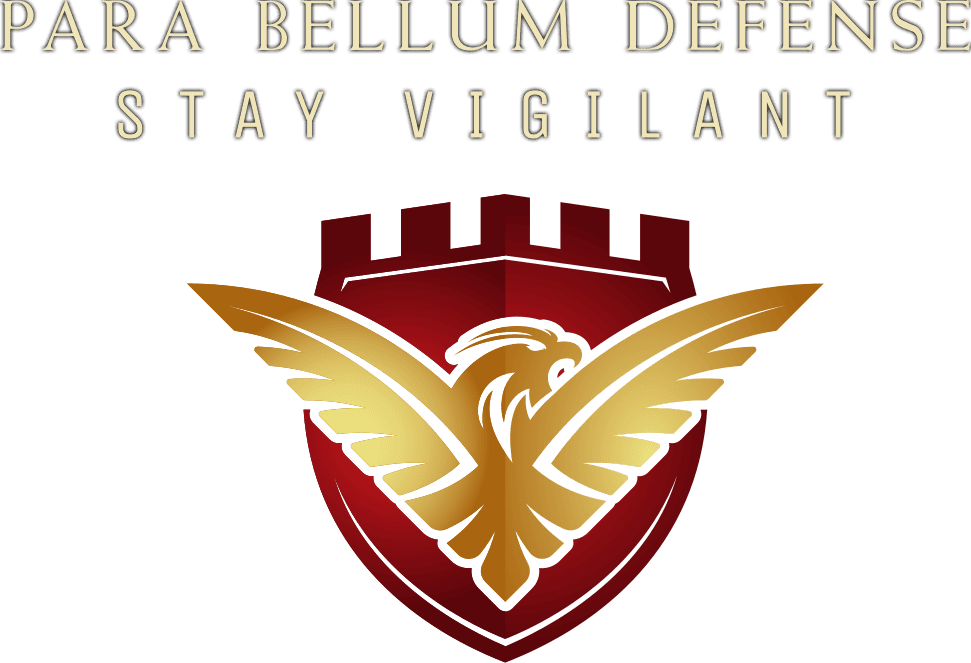
free shipping on orders over $25
We’re having a sale on all our products. Enter your email below to be notified about future sales.


We’re having a sale on all our products. Enter your email below to be notified about future sales.


Picture this: You’re walking home late at night, the streets are deserted, and out of nowhere, a stranger comes up to you with unknown intentions. It’s a situation that scares many, but having non-lethal self-defense tools can change you from a possible victim to a strong winner.
When you carry pepper spray or a taser, it’s not just about having a weapon – it’s about feeling ready to defend yourself. These tools protect your body and give you a sense of security that can boost your confidence and peace of mind. You might be surprised at how much safer and more sure of yourself you can become when you know you’re prepared to stay safe.
When you explore non-lethal self-defense options, you empower yourself to protect without causing permanent harm. By choosing these methods, like pepper spray, stun guns, and personal alarms, you can effectively stop an attacker without resorting to deadly force. It’s not just about safeguarding your safety, but also about staying within the boundaries of the law and ethical considerations.
Pepper spray can cause temporary blindness and intense discomfort, helping you escape from a dangerous situation. It’s small, easy to carry, and allowed in most places with some restrictions. Stun guns can give you a chance to get away by delivering a powerful shock that temporarily stops an attacker. Personal alarms are also useful as they make a loud noise that can confuse the attacker and get others to notice, often scaring them off.
When you learn about non-lethal self-defense options, you gain the physical tools to protect yourself. But it’s just as crucial to think about the mental side of defending yourself. Understanding your own thoughts and feelings helps you not just react to threats, but respond with purpose. Changing your mindset from feeling like a victim to being an empowered individual can greatly boost your confidence and overall safety.
To grasp the full scope of how self-defense influences your psychology, consider the following points:
Embracing the psychological components of self-defense transforms not just your physical security, but your mental resilience and confidence as well.
When you’re well-prepared for possible dangers, it boosts your confidence and helps you navigate daily life feeling more secure. It’s not just about having tools; it’s about having a mindset that’s alert and ready. You begin to see the world in a new light, not with fear, but with the belief that you can handle whatever comes your way.
To build confidence, start with learning. Know how conflicts work, spot dangers, and learn to prevent or calm down tough situations. It’s not about being scared of everything, but about believing in your ability to defend yourself when necessary.
Practicing situational awareness is another critical component. Being mindful of your surroundings and the behavior of those around you can often prevent confrontations before they start. This doesn’t mean living in a state of paranoia; rather, it’s about being observant and making smart choices about where you go and when.
Feeling prepared transcends physical security measures; it instills a sense of inner peace. You walk taller, speak more confidently, and engage with the world from a place of strength, not vulnerability. This transformation from feeling like a potential victim to a confident individual is the true power of preparedness.
Often, you’ll find that carrying non-lethal tools can significantly enhance your sense of security without resorting to extreme measures. These tools are designed to help you protect yourself in a dangerous situation, ensuring you can escape harm without causing lasting damage to your attacker.
Let’s dive into some key non-lethal tools that you should consider adding to your self-defense arsenal:
While equipping yourself with non-lethal tools is a significant step towards personal safety, it’s equally important to hone your situational awareness skills. This means being alert and aware of your environment at all times. It’s not about being paranoid but being prepared. You’ll start by observing the people around you, noting exits in every place you enter, and trusting your gut feelings about situations or individuals that don’t feel right.
Situational awareness is also about minimizing distractions. In today’s world, it’s easy to get lost in your phone or music, but when you’re in public spaces, it’s crucial to keep your head up and senses tuned in. This doesn’t mean you can’t enjoy your walk or commute, but it does mean you should be mindful of your surroundings.
Practicing situational awareness also involves making eye contact with people around you. It sends a message that you’re confident and aware, which can deter potential attackers. Remember, your safety isn’t just about the physical tools you carry; it’s also about the mental practices you adopt. Developing sharp situational awareness is a powerful step in transforming yourself from a potential victim into a confident individual ready to face the world.
To boost your confidence and safety, it’s crucial to master a variety of training techniques tailored for individuals of all skill levels. Whether you’re a beginner or have some experience, practicing specific self-defense skills can significantly enhance your ability to protect yourself in various situations. Here are four essential training techniques that everyone should know:
After exploring various training techniques for self-defense, it’s equally important to understand the legal considerations and rights associated with using them. While non-lethal means offer a safer alternative, they’re not without legal boundaries. It’s crucial you’re aware of these to avoid unintended consequences.
| Item | Legal Consideration | Your Right |
|---|---|---|
| Pepper Spray | Legal in most places, but check local restrictions. | Defense against imminent threat. |
| Stun Guns | Varies widely; illegal in some areas. | Use in self-defense situations. |
| Personal Alarms | Generally legal everywhere. | Draw attention in emergencies. |
| Defensive Tactics | Reasonable force laws apply. | Protect yourself within legal limits. |
| Awareness Tools | Legal; privacy laws may apply. | Increase safety without infringing on others’ rights. |
Understanding the legal framework surrounding these tools and techniques ensures that you’re not only prepared to defend yourself but also equipped to navigate the aftermath responsibly. Remember, the goal is to enhance your safety and confidence without compromising your legal standing. Always research and adhere to your local laws, and if in doubt, consult a legal professional to guide you through your rights and responsibilities in self-defense scenarios.
Hearing from individuals who’ve navigated their journey from vulnerability to empowerment through non-lethal self-defense can profoundly shift your perspective on personal safety. It’s more than just stories; it’s a testament to the transformative power of taking control over one’s own safety without causing permanent harm. These narratives aren’t just tales of survival but of thriving.
Consider the experiences of those who’ve walked this path:
These stories highlight a shared journey from fear to freedom, underscoring the profound impact non-lethal self-defense can have on one’s life.
Incorporating non-lethal self-defense tools and techniques into your daily routine can significantly enhance your personal safety and peace of mind. You’re not just preparing for potential threats; you’re actively taking control of your safety in every aspect of your life.
Whether you’re walking home at night, using public transportation, or navigating crowded spaces, knowing you’re equipped with non-lethal self-defense options can make all the difference.
Start by familiarizing yourself with the tools at your disposal. Pepper spray, personal alarms, and tactical pens aren’t only effective but also easy to carry and use. You don’t need extensive training to deploy them effectively in a threatening situation. However, it’s crucial to practice and become comfortable with these tools before you find yourself in a situation where you need them.
Awareness of your surroundings plays a pivotal role in maintaining your safety. Stay vigilant, trust your instincts, and avoid distractions like your phone when moving through less secure areas. If something feels off, listen to that feeling. It’s also wise to plan your routes in advance and let someone know your whereabouts, especially if you’re going somewhere new or returning late at night.
Understanding non-lethal self-defense tools and techniques not only boosts your immediate safety but also empowers you to confidently face the future. When you’re equipped with the knowledge and skills to protect yourself, you’re not just preparing for potential threats; you’re investing in your personal growth and peace of mind. This newfound confidence can ripple through all aspects of your life, opening doors to opportunities you might’ve previously avoided out of fear.
Here are four key ways non-lethal self-defense empowers your future:
You can integrate non-lethal self-defense into public safety by offering community workshops, adding them to school curriculums, and ensuring local police are trained in these methods to promote a safer environment for everyone.
Producing non-lethal self-defense tools has its downsides; 70% of these products contribute to plastic waste. You should consider their environmental footprint when choosing how to protect yourself, aiming for sustainable options whenever possible.
Cultural perceptions of self-defense vary globally, influencing non-lethal methods’ adoption. Societies with stricter gun laws may favor these tools, while others prioritize traditional defense forms, affecting your choices in personal safety strategies.
You might wonder if you can really master non-lethal self-defense techniques online. While online resources are helpful, true proficiency often requires in-person training to fine-tune the physical skills and instincts needed.
You’re wondering how non-lethal self-defense stacks up against verbal de-escalation in real life. It’s a mix; while words can defuse, sometimes physical techniques are your best bet for safety. It’s about the situation.
Para Bellum Defense
133 Palm Drive
Winter Haven, FL 33880
Telephone: 585-284-6669

Rattling great information can be found on weblog.Expand blog